The Portland Timbers welcomed the Seattle Sounders to Providence Park for another meeting in one of the MLS most heated derby. This was the 107th meeting in all competitions, going back to their first meeting in 1975 in the old NASL. In their previous meeting this season, Portland Timbers secured a dramatic 2-1 victory on 21 July at CenturyLink Field, care of two Brian Fernandez goals on either side of halftime. This made it three matches in a row in this rivalry to have been won by the away side.
The Timbers had a seven-match undefeated streak at home come to an end the previous Sunday against Atlanta United, while the Sounders saw their winless run reach four-matches after coming back for a late 2-2 draw with LA Galaxy at Dignity Health Sports Park on Saturday. Both sides needed a result from this match, with Seattle slipping down the MLS Western Conference table and Portland Timbers have fallen out of the playoff spots.
In the first 15 minutes, the Seattle Sounders struggled to deal with Portland’s attack. However, Portland was equally unable to deal with the Sounders quick transitions. Jordan Morris was able to create the first goal in the 16th minute, crossing the ball before Cristian Roldan was able to slot the ball home. After getting to halftime at 1-0, Portland gave up a second goal within 60 seconds of the restart. With Jordan Morris hampered by an injury, the Timbers were able to get back into this match. Diego Valeri scored off a deflected free kick in the 54th minute, but they were unable to finish off any more of the chances they created. With the final whistle, Seattle secured a much needed 2-1 victory.
This tactical analysis will look at how Portland Timbers overran the Seattle Sounders before the Sounders adjusted the midfield. Also, we look at how Jordan Morris proved a dangerous attacking option. Finally, we’ll look at how Portland’s tactics took advantage of Morris’ injury.
Line-up
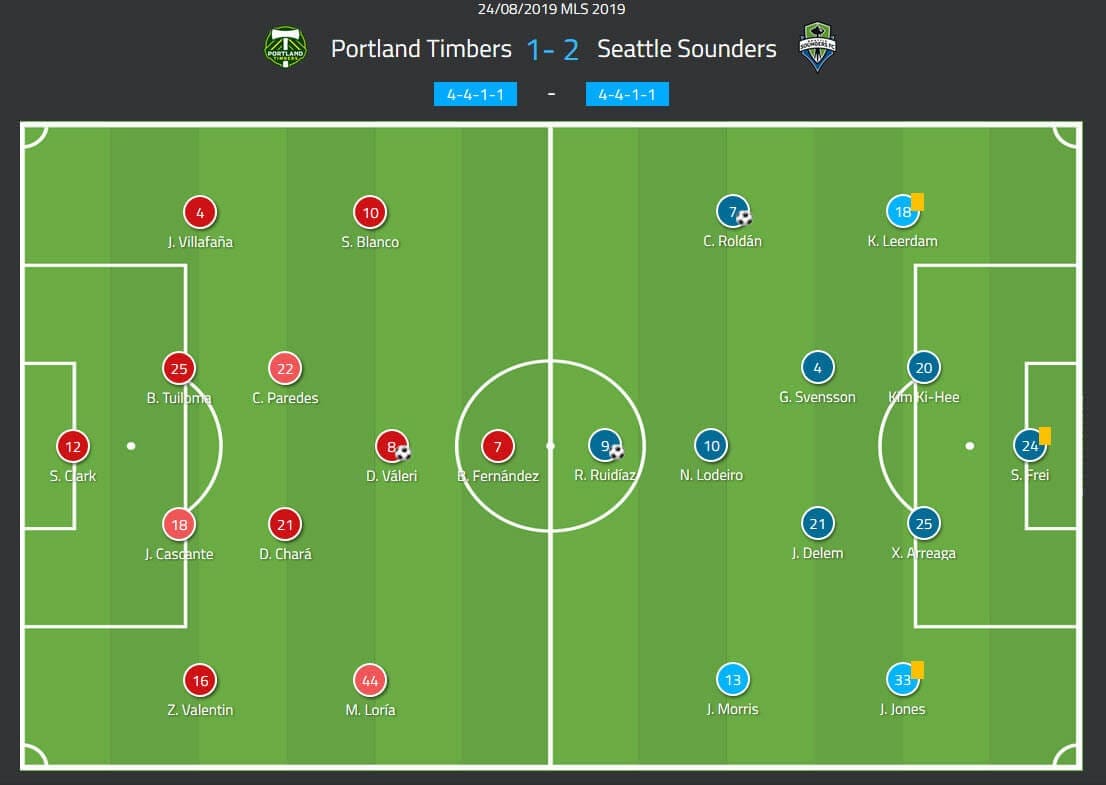
Giovanni Savarese made three changes from their 2-0 home loss against Atlanta United a week earlier. Jorge Moreira was suspended for this match due to yellow card accumulation, while Jeremy Ebobisse and Renzo Zambrano both started the derby match on the bench. Marvin Loria, Cristhian Paredes and Zarek Valentin got the start in their places.
Brian Schmetzer made only two changes to the side that drew 2-2 away to LA six days previously. Harry Shipp was left on the bench, with Nouhou Tolo being left out of the matchday squad altogether. Jordy Delem and Joevin Jones got the starts instead, which allowed Cristian Roldan to move to the right-wing from deeper in the midfield.
Portland Timbers overwhelm Seattle Sounders early in the match.
Early in the match, Portland was able to overwhelm Seattle going forward. Seattle Sounders played with two central midfielders to shield the defence, Jordy Delem and Gustav Svensson. The midfielders were in charge of ensuring that Portland Timber’s most dangerous attacker, Diego Valeri, didn’t have space to operate. However, in the opening 15 minutes of the match, their line was too straight. They were both occupying the same horizontal plane, and this made it too easy for Portland to play through the lines.
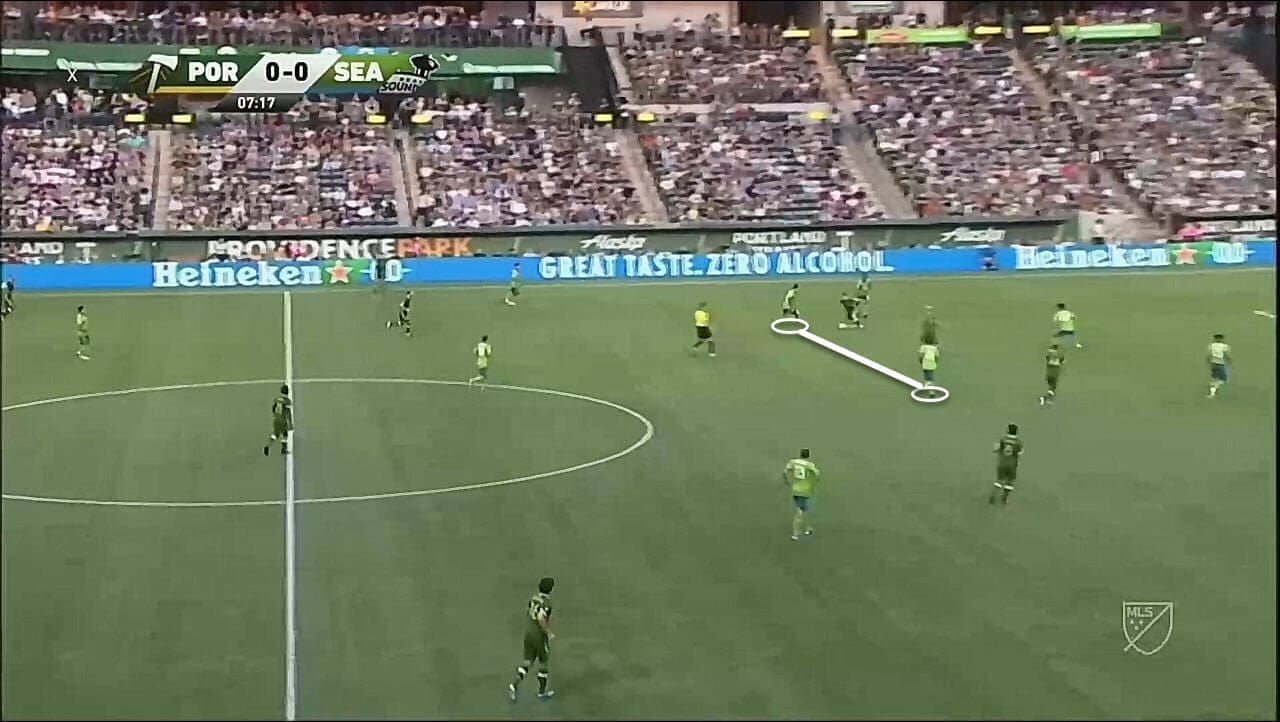
As we can see in the image above, Delem and Svensson are in the same horizontal line, and this leaves a large gap behind them that both Brian Fernandez and Marvin Loria are occupying. This gap caused problems for Seattle’s backline as the centre-backs were forced to step forward to challenge players in this gap when they received the ball. With this movement, Portland was threatening on the attack in the first 15 minutes of the match.
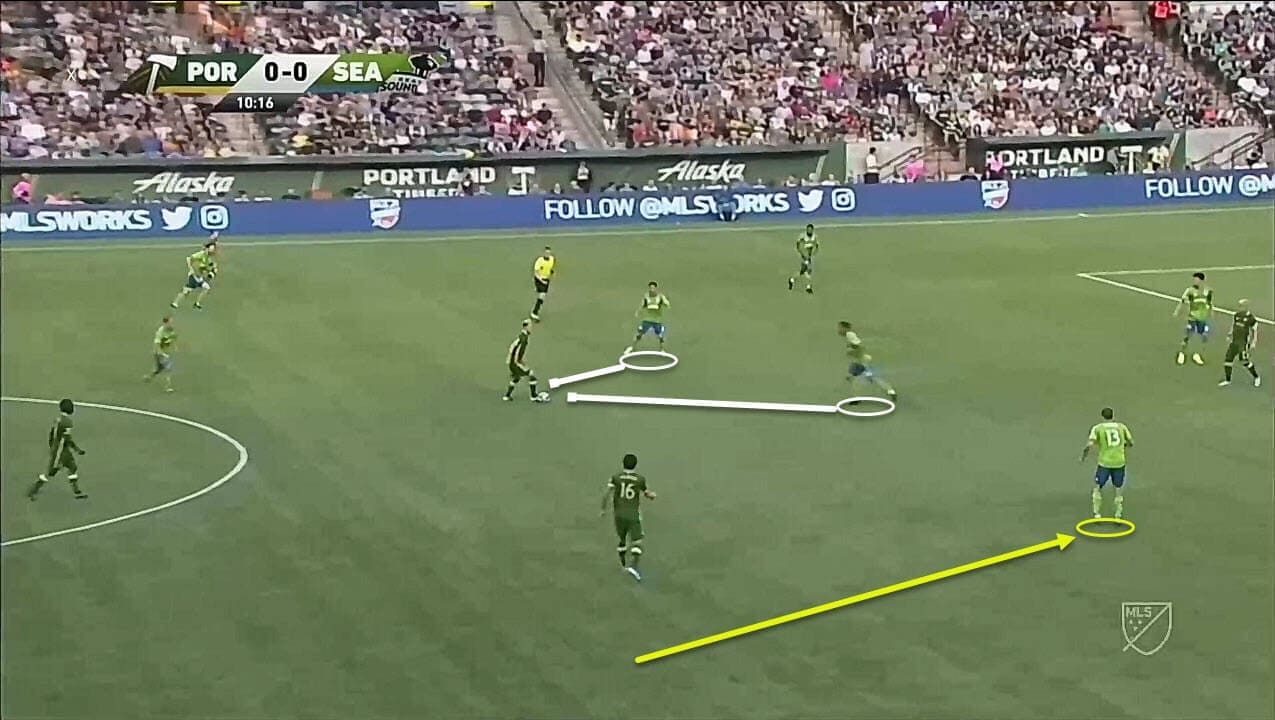
Another problem caused by both of Seattle Sounders’ defensive midfielders being on the same plane was in front of them. In the image above, we see that Cristhian Paredes receives the ball in the midfield, but nobody is close enough to challenge him immediately. He’s able to pick his head up and play the ball out Diego Valeri wide on the right side.
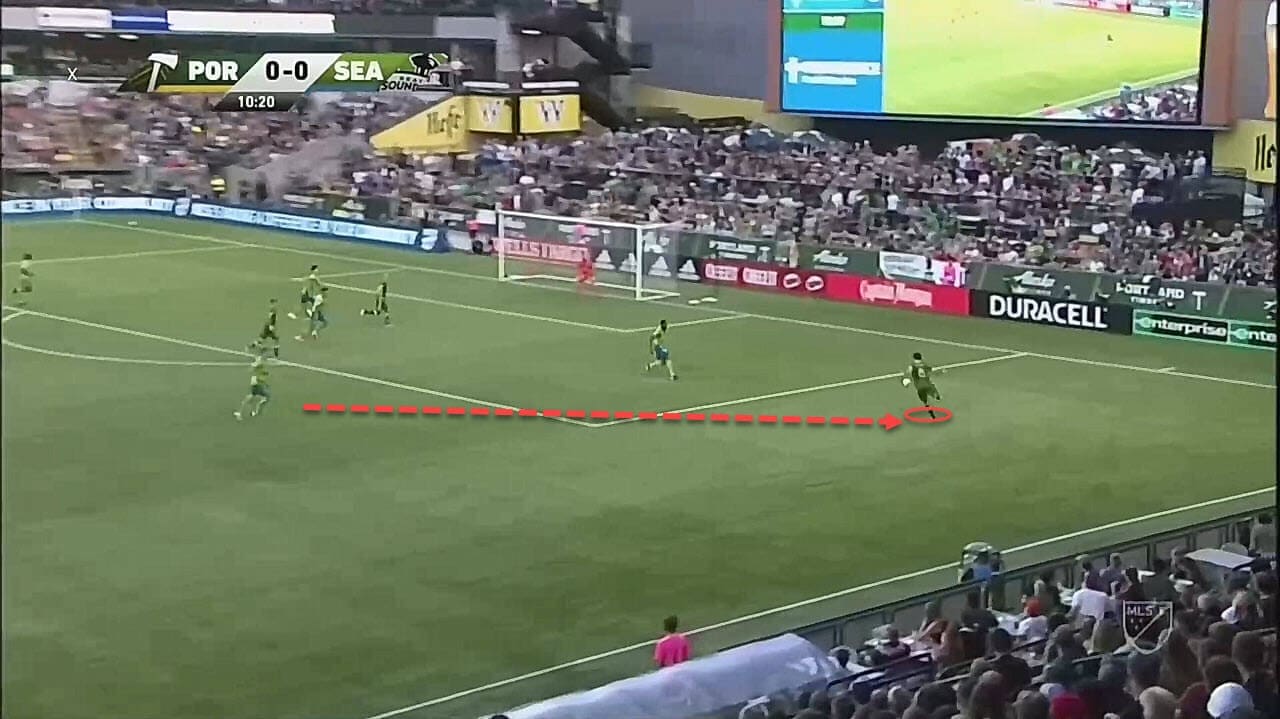
Moving into the wide areas was a common movement by Diego Valeri throughout the match. He plays the number 10 role as more of a central winger. He’s always looking to move into wide areas, hoping to help create overloads and create advantages for Portland on the attack. He struggled to create the overloads in this match as both Portland wingers, Sebastian Blanco and Loria, prefer to come into central areas to combine on the attack. They tend to function as more inside forwards than true wingers, which often leaves Valeri as the only player operating in wide areas.
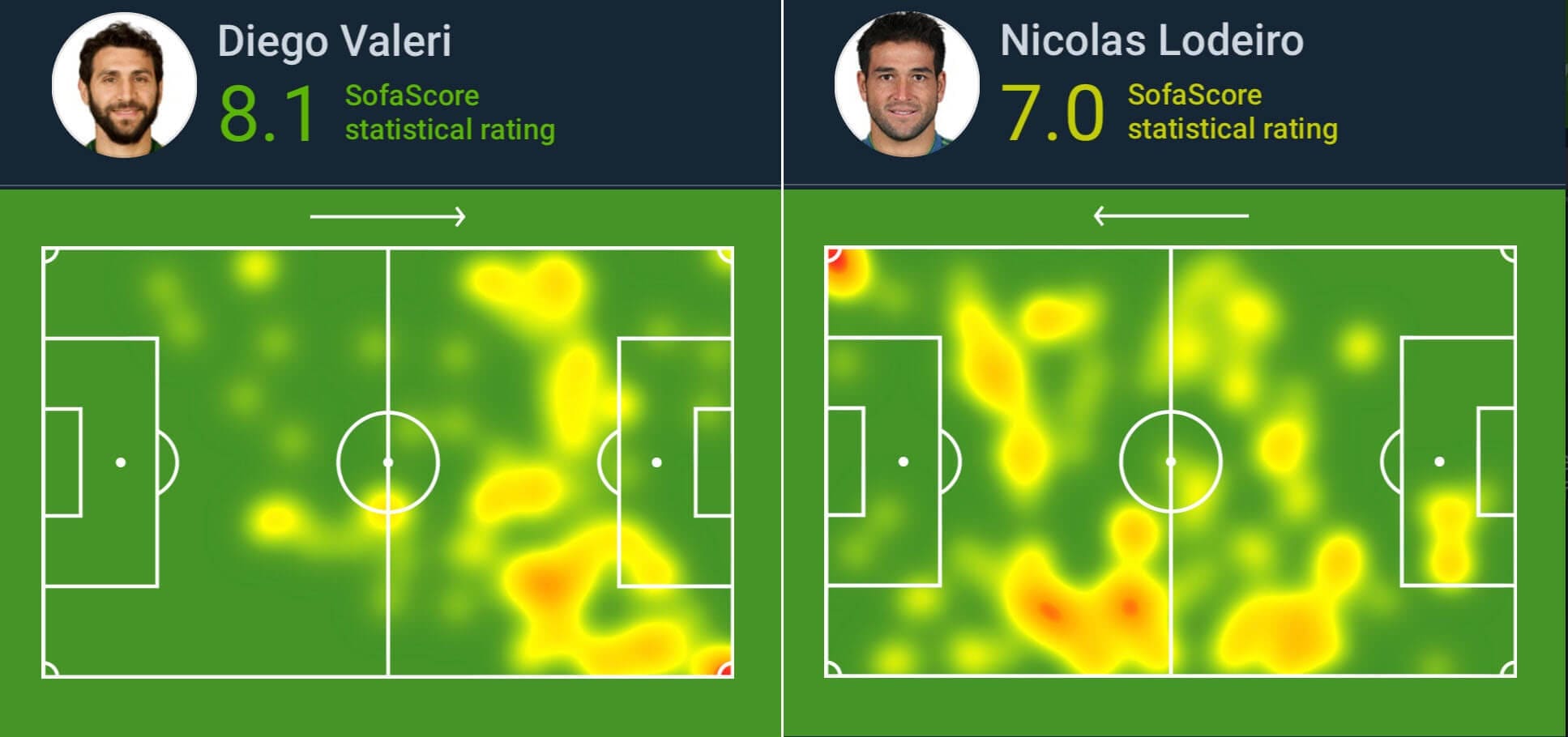
On the opposite side, Nicolas Lodeiro plays the number 10 role similarly to Valeri. The obvious difference is that Lodeiro is more involved in the build-up. This was especially important in this match as both Delem and Svensson are limited in possession, and Lodeiro’s willingness to come deep in the build-up allowed Seattle to hold possession more consistently.
The Seattle Sounders have had problems defensively without Roman Torres, who is serving a suspension for violating MLS’ drug policy. Without him in defensive, the Sounders have been vulnerable in a couple of different ways. With Torres, he primarily serves as the covering centre-back, allowing the other centre-back to step out to track runs and challenge players receiving the ball. In his absence, the Sounders centre-backs have had problems communicating which of the centre-backs needs to step out of the defensive line and who needs to cover. This problem was compounded in the early part of this match with the problems in defensive midfield.
The second issue that Seattle’s backline has struggled with has been tracking runs to the far post. Portland Timbers were dangerous in having Brian Fernandez made the near post runs, and this left the far post available for the far-side winger to attack into. This tactic was used repeatedly throughout the match, with an obvious example coming in the fifth minute.
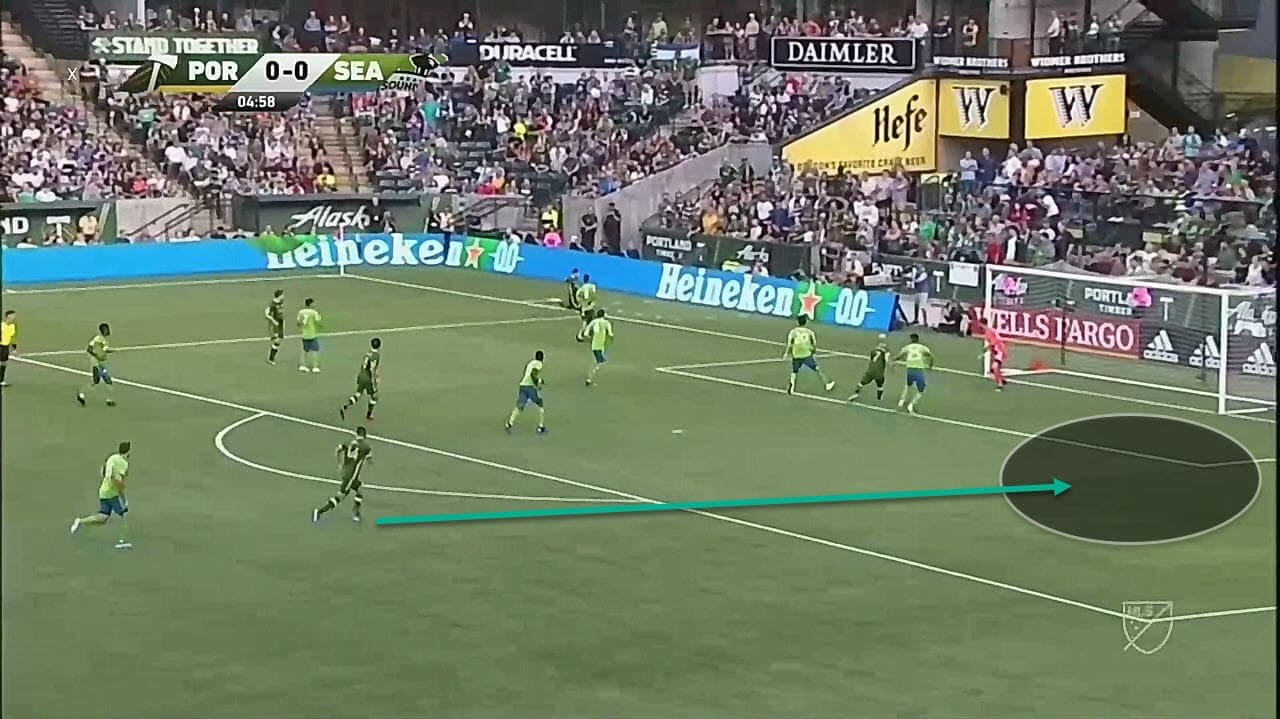
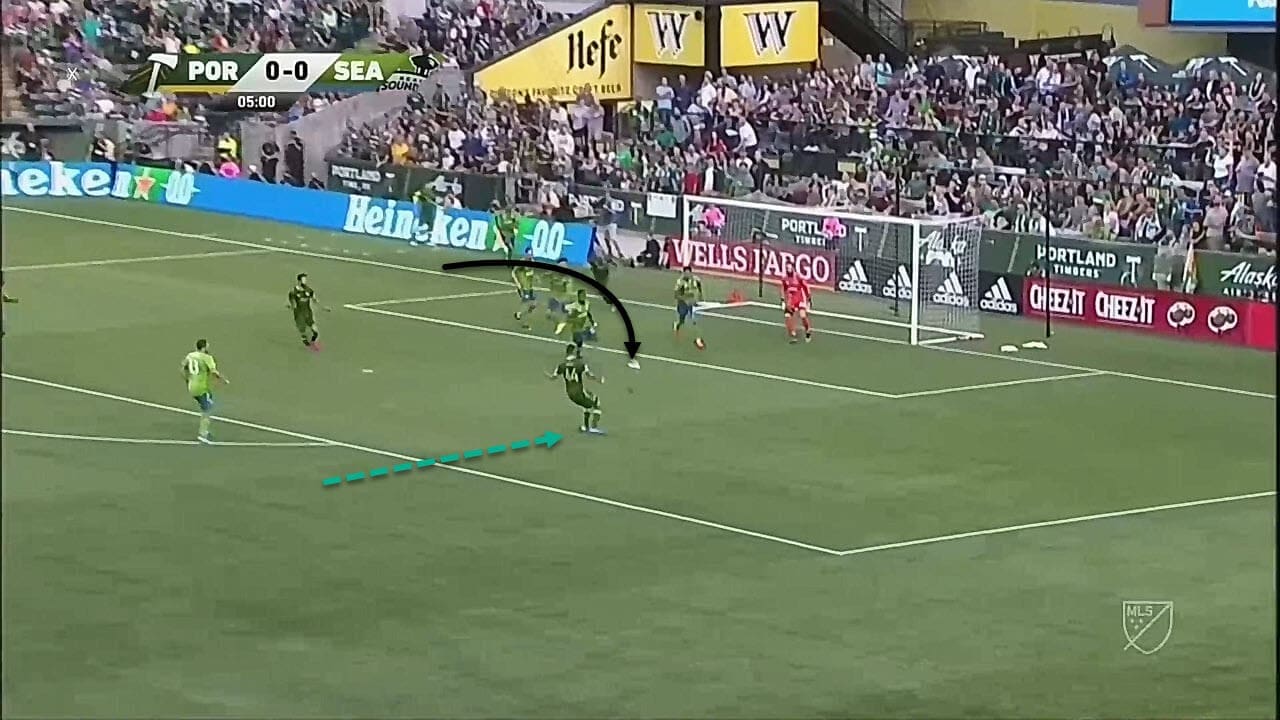
As we can see in the images above, Seattle is defending very narrow as the ball is near the end line with Blanco. There is a large gap at the far post, and Loria who is in a central area runs into the open space. Blanco plays the ball across, but Loria has problems controlling the ball. He eventually lays the ball off for Diego Chara, who takes a first-time shot that goes high into the South Stand.
Jordan Morris drags the Seattle Sounders into the lead.
With Portland so dangerous on the attack, it presented a counterattacking opportunity for the Sounders. Seattle Sounders were able to attack down their left side with Jordan Morris. His speed is troubling for Portland’s defence, and he was able to attack into space behind Zarek Valentin. However, he wasn’t afraid of attacking Valentin in one-vs-one situations.
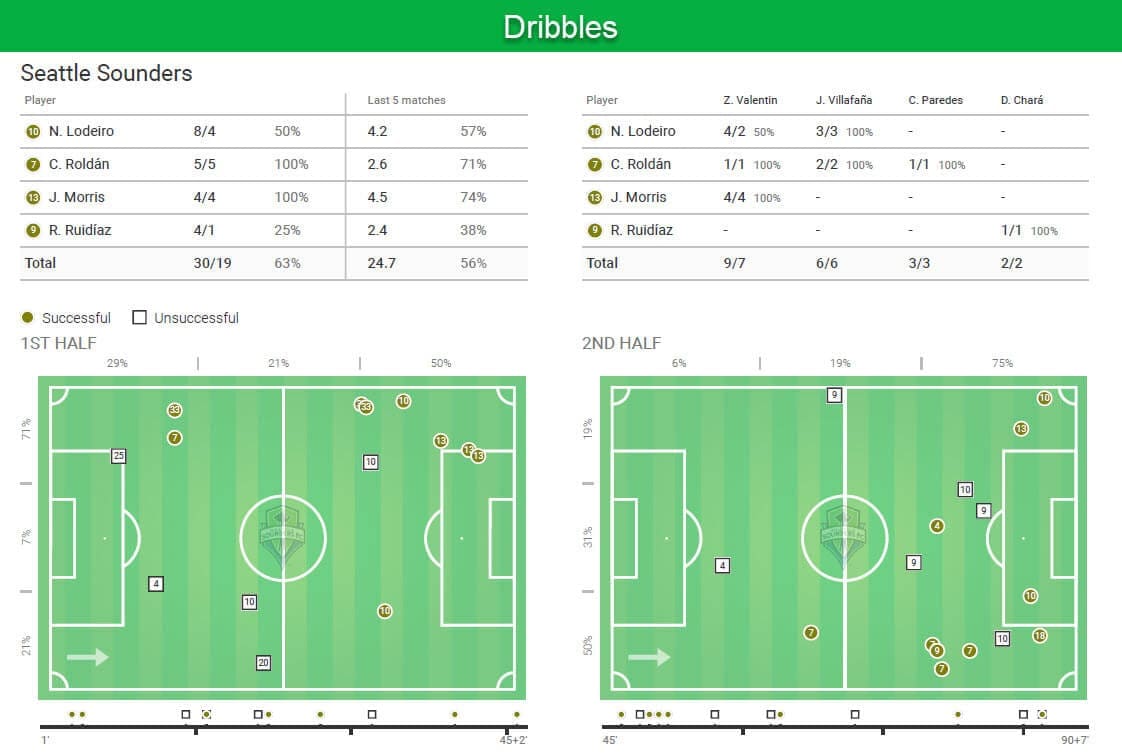
A clear example of this came in setting up Seattle Sounders’ first goal in the 16th minute. Morris can receive the ball near the touchline, as one of the Sounders’ most advanced attackers. Valentin is playing fairly narrow and must move to challenge a very direct Morris run towards the goal. Morris stands Valentin up, and can easily knock the ball past him to the end line. Valentin is beaten defensively, and Morris can clip the ball towards the back post. After a blocked shot, Raúl Ruidíaz taps the ball to Cristian Roldan, who is able to slot the ball home.
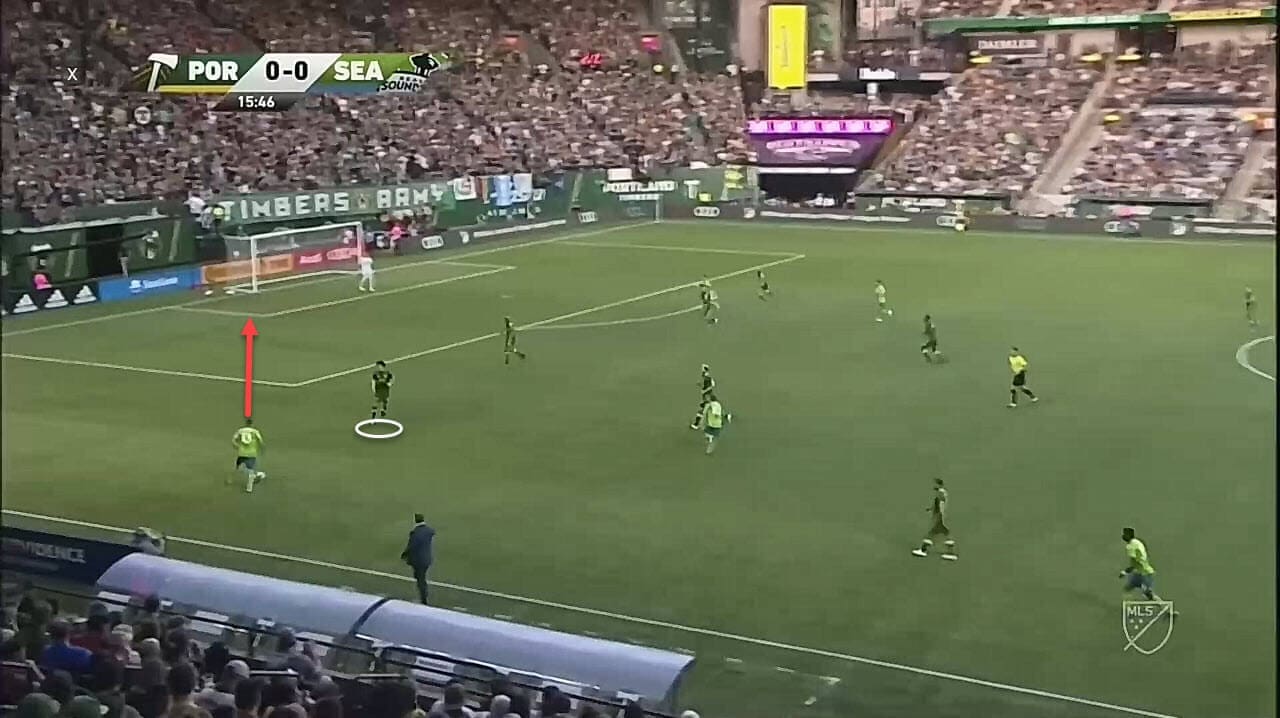
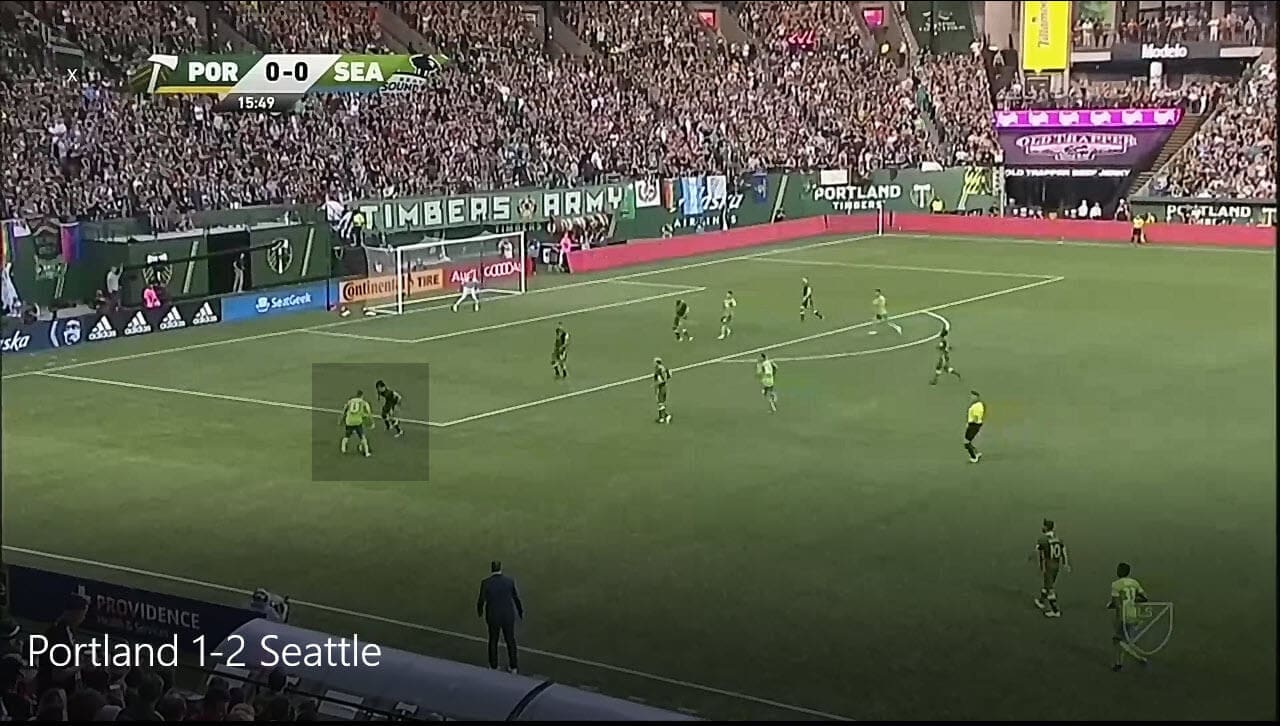
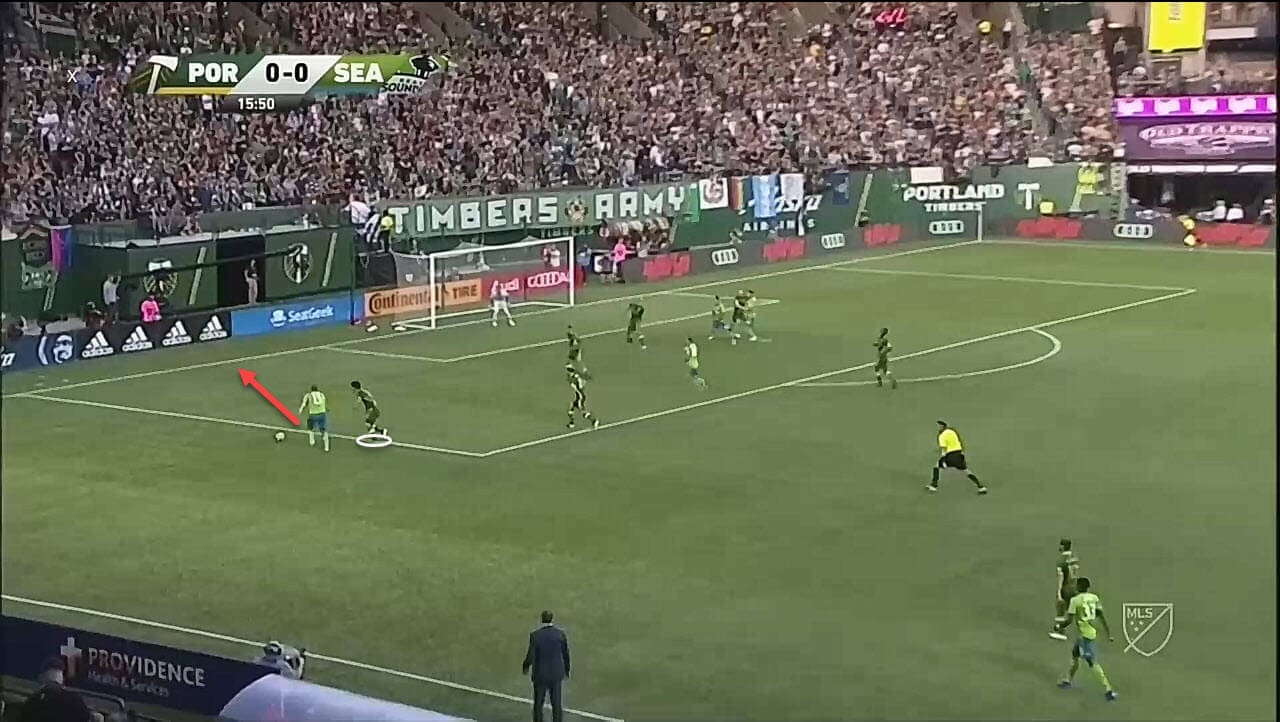
The ability to find Morris on transition was available due to a simple change in midfield. Svensson and Delem started staggering their positioning in the midfield, with Delem frequently moving five to six yards further up the pitch, and Svensson playing behind him. This change meant that the visitors were able to stifle Portland’s attack better. This also meant that Morris wasn’t required to drop as deep to assist defensively. He was now able to concentrate on getting forward on the counterattack.
Seattle started to have problems again late in the first half when it appeared that Jordan Morris suffered a groin injury. In the final couple of minutes of the first half, and into the second half, he was no longer able to offer the dangerous attacking threat down the left side. Luckily for the Seattle Sounders, they were able to double their lead within 60 seconds of second-half restarting.
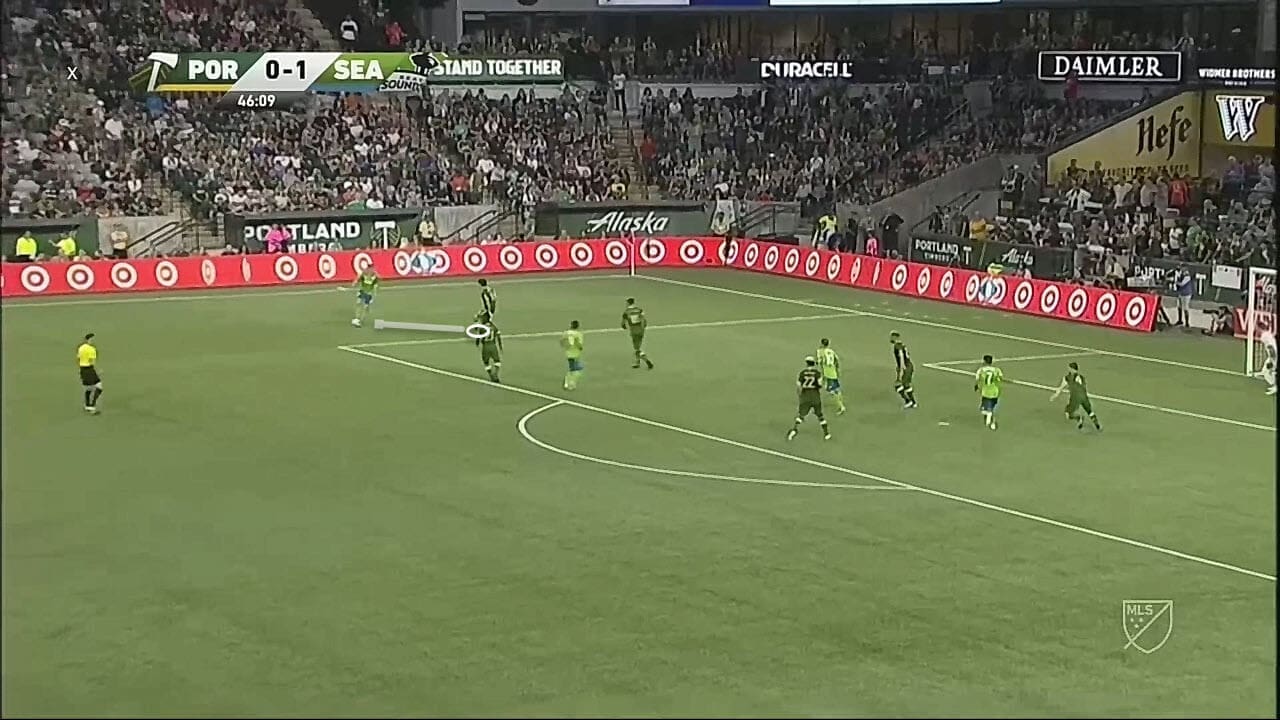
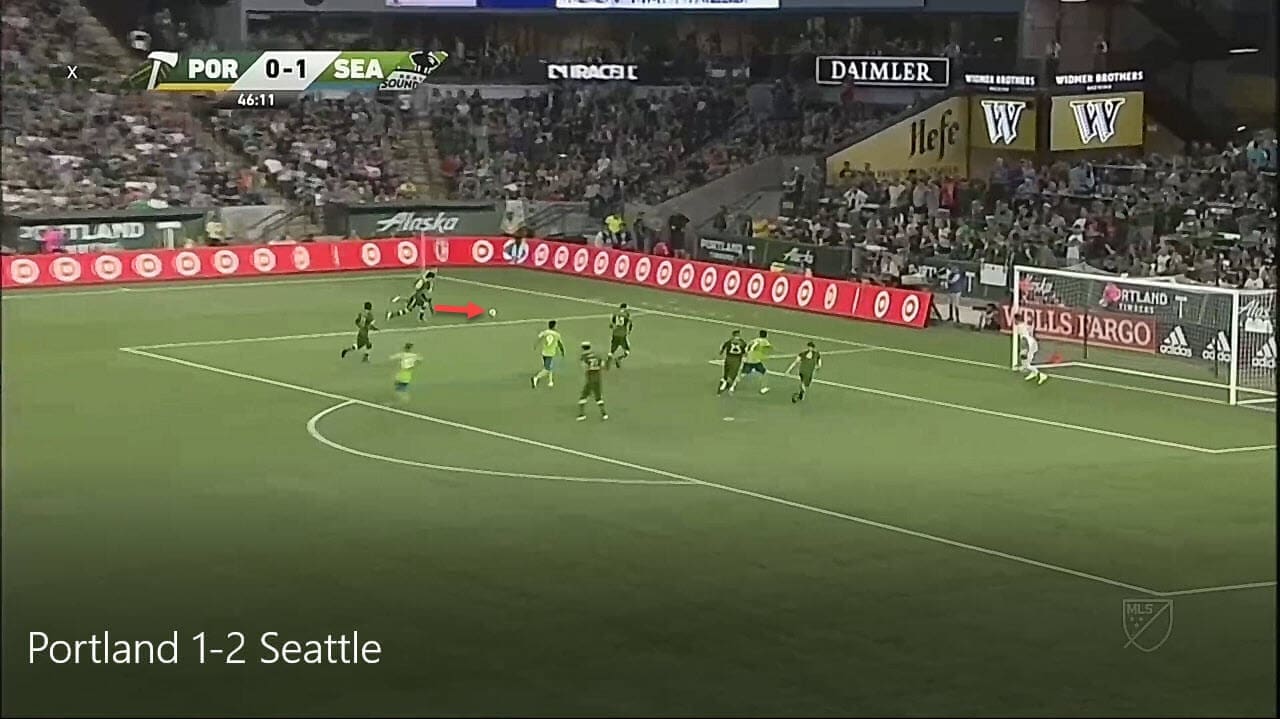
Again, Morris set up this goal with his ability to beat Valentin. He receives the ball near the touchline, with Valentin five yards away. Morris can dribble past the right-back again, getting to the end line and chipping the ball into the penalty area. Ruidíaz is able to get between the Portland centre-backs and head the ball into double the visitors lead.
Portland Timbers get the upper hand again.
Jordan Morris struggled with his injury until the 66th minute, when Harry Shipp replaced him. However, Portland made an equally important change at half-time to try and get back into this match. Jeremy Ebobisse replaced Marvin Loria, and this was an important change for the home side, as Ebobisse plays like a more conventional winger. Instead of playing with two inverted wingers, who congested the centre of the pitch and forced Portland’s most dangerous attacker, Diego Valeri, into wide areas to find space, Ebobisse would stay wide on the right side, and this allowed Valeri to stay in central areas where he could be more dangerous.
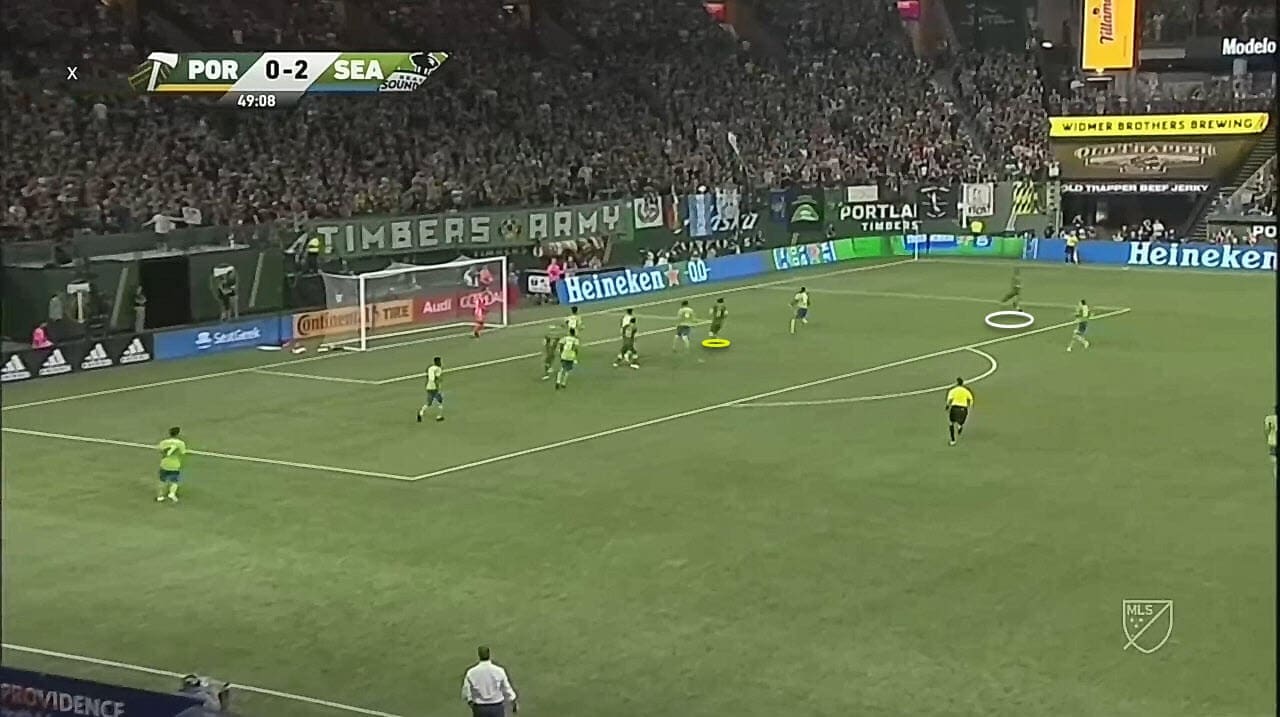
With the additional threat from the wide areas, Portland Timbers started to play more crosses. They had a decent success rate of 40% on 40 crosses, but they struggled with a lack of a quality target in the middle of the penalty area.
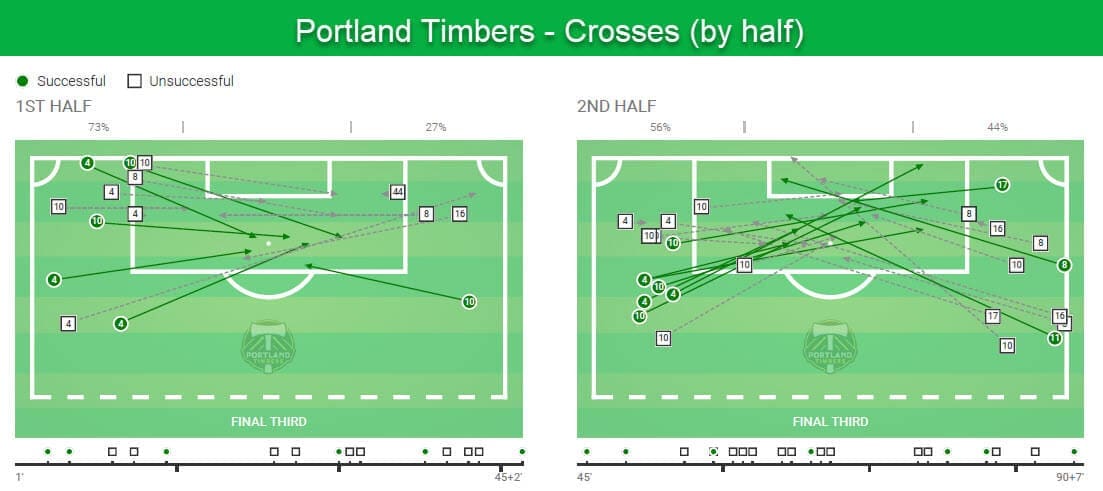
A lot of the problems in Portland’s attack has come down to Brian Fernandez. He is a quality attacking option, as he demonstrated in Liga MX but he has his limits. He is at his best when he has space to attack behind the opposition’s backline. He also works best when he can attack from wide areas into central areas, and this is where most of his success came from with Necaxa, but with the Timbers he has frequently been played as the lone striker.
The MLS sides seem to have recognised that the way to limit Fernandez is to muscle him with the centre-backs and not allow him to get into space behind them. During possession, he has missed runs and attacking opportunities from wide areas. The image below is a good example of this, as he should have made the near post run for a chance to turn in Blanco’s cross. Unfortunately, he stays near the penalty spot, and the cross is wasted.
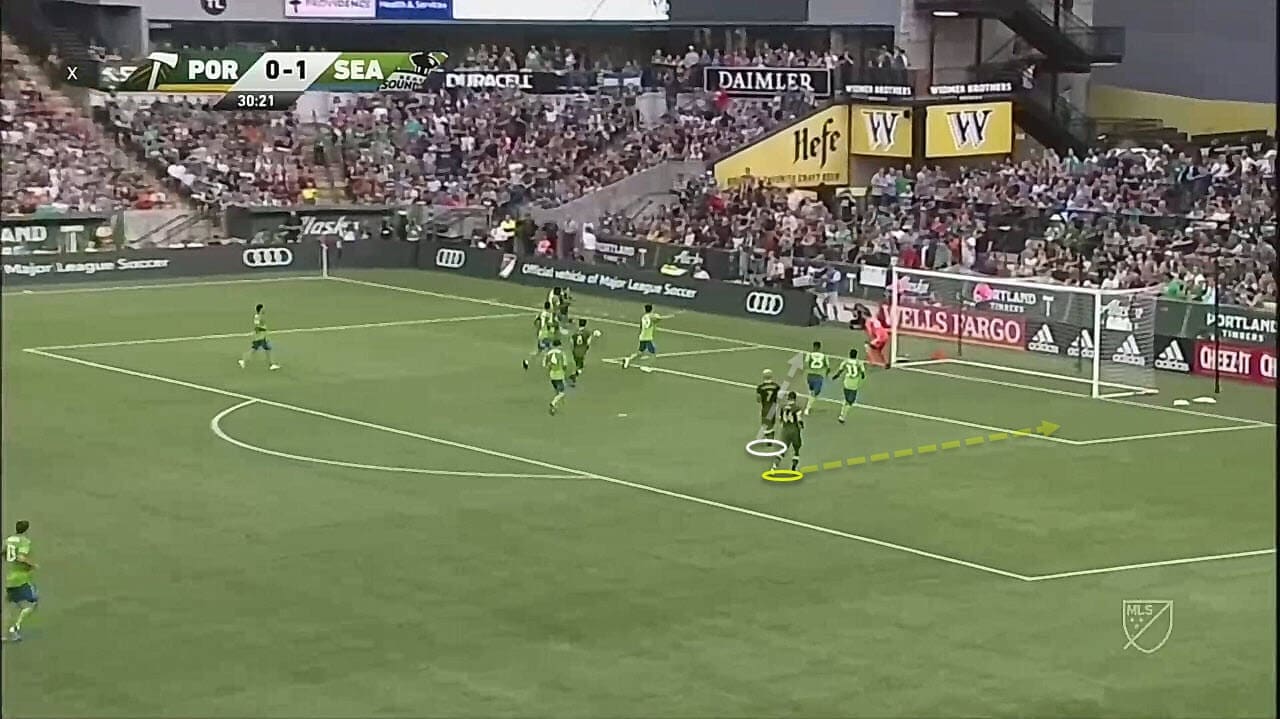
The graphic below shows how little Fernandez was able to contribute in this match. After Portland Timbers reduced the deficit in the 54th minute, it looked like Portland was likely to get something out of this match. However, the Timbers were never able to convert any of the chances they created over the final 30 minutes. Perhaps with a more clinical finisher or one who can offer more when controlling possession, Portland could have come out of this match with at least a draw, if not a win.
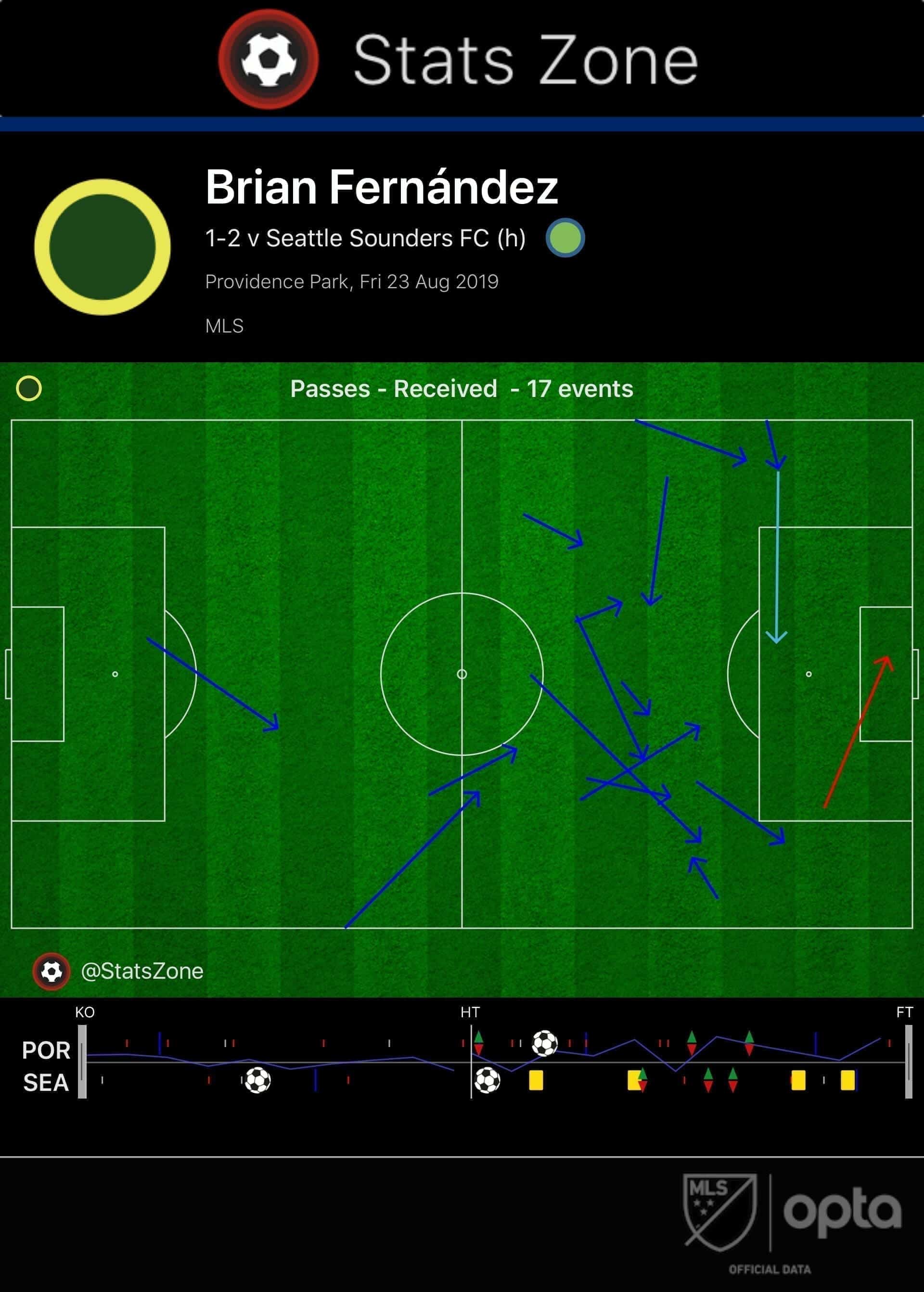
Conclusions
The opening of this match was eerily quiet as the Supporter Groups for both sides were protesting against an MLS policy banning political banners at their matches. It wasn’t until the 33rd minute that both groups came into life, and injected some energy into what is typically a charged affair. In the opening 30 minutes, each side had only committed one foul apiece, which is unusual in one of MLS’ most heated rivalries.
This analysis shows that Portland Timbers were able to control the opening portion of this match, but they weren’t able to convert their control into goals. Once Seattle adjusted their midfield and took advantage of Jordan Morris’ abilities in transition, the visitors were able to seize the initiative. The match changed again at halftime as Morris dealt with a groin injury, and Portland was again able to get the upper hand. They scored off a deflected free-kick, reducing the deficit to 2-1 but they weren’t able to convert any more of their chances. The victory for Seattle makes them likely to host an MLS playoff match, while the loss leaves Portland with ground to make up if they want to return to the MLS playoffs.

If you love tactical analysis, then you’ll love the digital magazines from totalfootballanalysis.com – a guaranteed 100+ pages of pure tactical analysis covering topics from the Premier League, Serie A, La Liga, Bundesliga and many, many more. Buy your copy of the August issue for just ₤4.99 here.

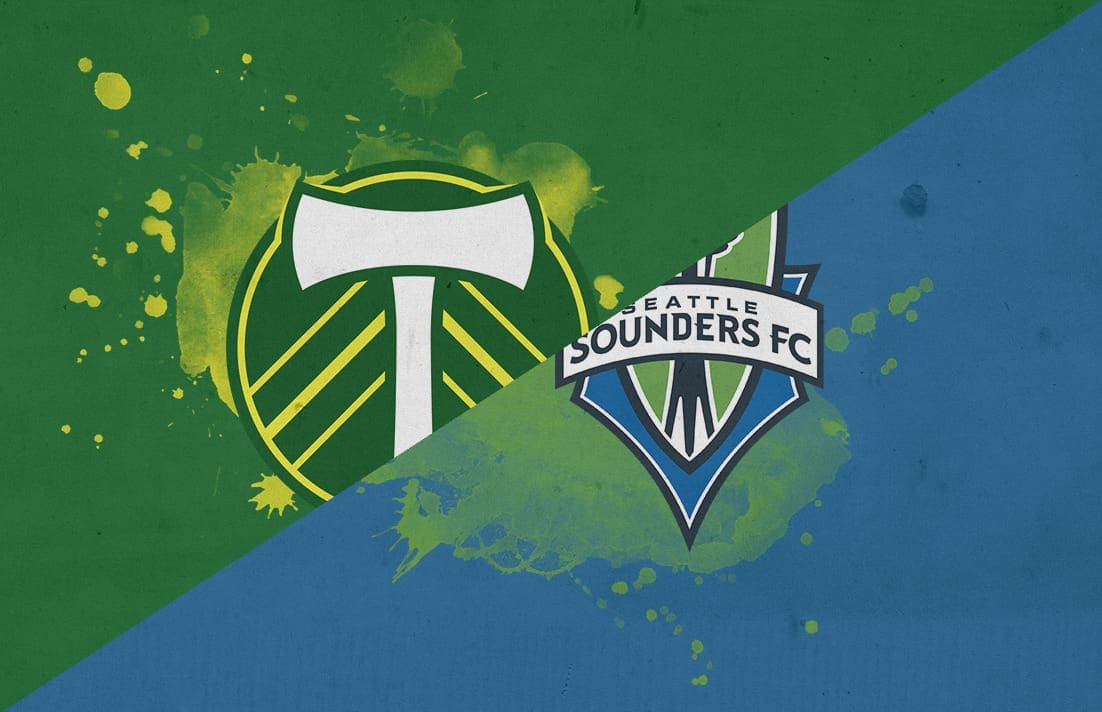



Comments